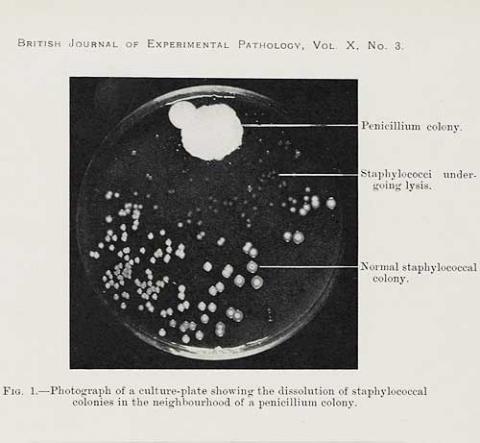I am a reading specialist who teaches high school equivalency exam preparation classes to adults. These students range in age from 16-75 years, and read at grade levels from 3rd to 11th. Many are learning disenfranchised.
My background is in art, literacy, math, and some science, not history. I repeat, not history. I never thought I would teach history until the new GED® came out in 2014, but I also knew that text books would probably not hold my students' interest. I knew there had to be a better way. Also, since the new GED® test is given on a computer and aligned with common core, I needed digital whole-text resources to engage my students as well as enrich their background needed for the exam.
I first started using AwesomeStories when I was teaching a unit on evolution. We had begun discussion about super-bugs and the evolution of bacteria through the overuse of antibiotics. I stumbled upon Penicillin The Wonder Drug on AwesomeStories.
Without an elaborate plan for differentiating instruction, I simply projected the story to the class and asked for volunteers to read sections aloud. We stopped to summarize, clarify, and discuss. "I didn't know penicillin came from bread mold!" "Why didn't Fleming patent it?" "You can die from a rose bush?" "Is making a lot of money off a cure ethical?" These and other comments came naturally from the class. Lastly at this first Awesome lesson, I asked students to generate questions from the incorporated 11-minute video, questions which they shared with each other.
For the next lesson I presented the steps of the scientific method. I asked, "How did Dr. Florey and his team of scientists use the scientific method to test penicillin's effectiveness?" Students wrote ideas under headings with the steps of the scientific method: ask a question, create a hypothesis, conduct an experiment, analyze the results, and draw a conclusion. Further discussion included the use of trials, and independent and dependent variables. I could see students' richer understanding and interest because they had this prior connection to Fleming and Florey.
Then the link to U.S. history developed, in Penicillin The Wonder Drug where this first antibiotic made a "monumental difference for the Allied forces." Who were the Allied forces? What happened in the Normandy invasion? What caused World War ll? So, on to the Collection of World War ll AwesomeStories.
I let the class choose a class close reading. They chose Pearl Harbor. We spent a lesson reading, discussing, and collecting vocabulary for the walls. Next I asked them to choose their own interest under the World War ll collection and write a summary to share with the class. Students enjoy working on topics they choose: Children in War, Japanese-American Internment, Holocaust Evidence are a few of about thirty story briefs in the AwesomeStories collection.
Another close reading session together with Flags of Our Fathers to fulfill our vocabulary search for imperialism, nationalism, fascism, militarism, and propaganda. A banner went up on the wall with our overarching question, "War-What is It Good For?" and our study of wars continued, together as a class to practice reading strategies and harvest vocabulary, and independently to take off in directions they selected.
"Penicillin—The Wonder Drug" helped me make a bridge between science and history. There are many other bridges I will make between subjects, and I can often rely on AwesomeStories to help. I recently found another bridge from Civil Rights to Vietnam War in Remember the Titans. In the end, the real lesson is that seemingly unrelated events have deeper relationships, and though we have not abandoned the text book, it has become a helpful accessory to our study, a resource makes more sense when students have heard and read some of the tales.
To cite this story (For MLA citation guidance see easybib or OWL ):
Mora da Silva "A Teaching Bridge: Evolution of Bacteria to World War ll" AwesomeStories.com. May 25, 2015. Jan 09, 2026.<http://www.awesomestories.com/asset/view/A-Teaching-Bridge-Evolution-of-Bacteria-to-World-War-ll>.





